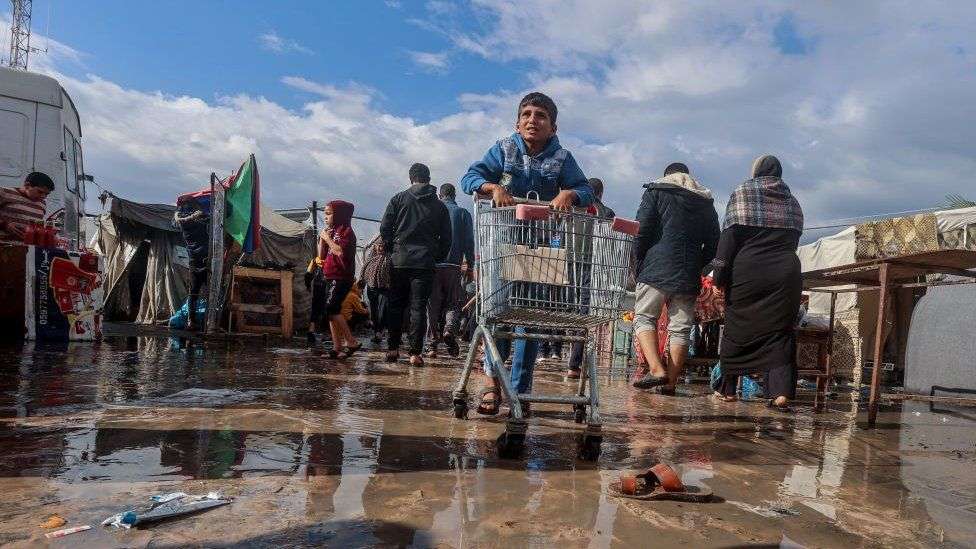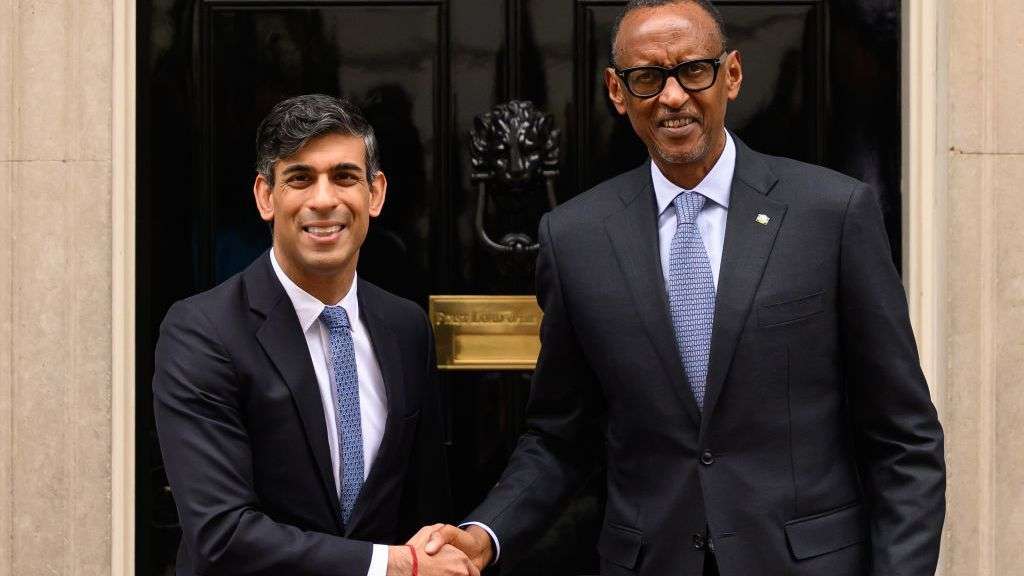Israel's military campaign in Gaza City is probably in its final stages.
The truce, brokered to allow for the release of Israeli hostages and Palestinian prisoners, will delay the IDF by anywhere from four to nine days, depending on how many hostages Hamas decides to release.
When that ends, Israeli experts expect the battle for control of Gaza City to resume and last another week to 10 days.
But what happens when the Israeli military turns its attention to the southern Gaza Strip, as Prime Minister Benjamin Netanyahu has strongly indicated?
Israel has vowed to destroy Hamas wherever it exists. It assumes that the group's most important leaders, Yayha Sinwar and Mohammed Deif, are somewhere in the south, along with thousands of fighters and, probably, a significant number of Israeli hostages.
If Israel decides to do to the south what it's already done to the north, will Western - especially American - goodwill start to run out?
With the bulk of the Gaza Strip's estimated 2.2 million people now crammed into the southern two thirds of the Strip, many of them homeless and traumatised, is a larger humanitarian disaster looming?
One of the last straws might be the sight of hundreds of Palestinian civilians, huddled in tents, amid the sandy fields of a place called al-Mawasi.
According to the UN relief agency for Palestinians (Unrwa), almost 1.7 million people have been displaced across the Gaza Strip since 7 October. Most of them are in the south, living in overcrowded shelters.
UN officials speak of already desperate conditions, with tens of thousands of people sheltering in schools, hospitals and, in some cases, tents.
Early winter rains have already caused flooding, adding to the misery.
For several weeks, Israeli officials have been talking about a solution - a so-called "safe area" at al-Mawasi, a thin strip of mainly agricultural land along the Mediterranean coast, close to the Egyptian border.
Last week, leaflets dropped over the nearby city of Khan Yunis warned of impending airstrikes and told people to move west, towards the sea.
In a post on social media on Thursday, Avichay Adraee, the IDF's spokesman for the Arabic media, told Gazans al-Mawasi would provide "the appropriate conditions to protect your loved ones."
But how realistic is it to expect more than two million people to shelter there while the war rages nearby? And just how "appropriate" are conditions at al-Mawasi?
The map shows a patchwork of fields, greenhouses and scattered houses. Although it is hard to be certain, the area defined by Israel is about 2.5km (1.6 miles) wide, at its widest, and just over 4km (2.5 miles) long.
Dr Michael Milshtein, a former adviser on Palestinian affairs to Israel's Coordinator of Government Activities in the Territories (COGAT), calls it "a beautiful and fruitful place, but quite small".
Aid agencies take a less generous view.
"It's a tiny piece of land," Juliette Touma, director of communications for Unrwa, says. "There's nothing there. It's just sand dunes and palm trees."
Any attempt to accommodate hundreds of thousands of displaced people, in an area seemingly lacking in essential infrastructure - there are no hospitals - will present the UN with a mammoth humanitarian challenge, including the setting up of emergency shelter, most likely tents.
It is also a moral challenge with deep historical resonance - much of Gaza's population is descended from refugees who lived in tents after their expulsion from Israel in 1948.
The Gaza Strip is already home to eight refugee camps, which have evolved over the decades into bustling, overcrowded towns. The UN doesn't want to be responsible for setting up yet another camp.
Israeli officials say it will be up to aid agencies to make sure help reaches al-Mawasi from the Rafah crossing, more than 10km away. They haven't said how this will work in practice.
US officials are said to be trying to negotiate with Israel over additional safe areas, possibly including one at Dahaniya, at the far southern tip of the Gaza Strip.
Under the terms of the hostage release agreement, which came into effect on Friday, Israel should also allow 200 trucks of aid into Gaza each day, much more than in recent weeks.
But on 16 November, a statement by the heads of 18 UN agencies and NGOs involved in providing assistance to Palestinian civilians appeared to reject Israel's plans outright.
"We will not participate in the establishment of any 'safe zone' in Gaza that is set up without the agreement of all the parties," it said.
UN officials say the parties include Israel, Hamas and the Palestinian Authority, based in the West Bank.
Without mentioning al-Mawasi by name, the 16 November statement warned that Israel's unilateral proposals could put many lives at risk.
One of the signatories, Dr Tedros Ghebreyesus, director-general of the World Health Organisation, called the plans "a recipe for disaster".
"Attempting to cram so many people into such a small area with such little infrastructure or services," he said, "will significantly increase risks to health for people who are already on the brink."
Israeli officials say Hamas is to blame and seem unfazed by the dangers. Al-Mawasi, they say, is the one area Israeli forces have undertaken not to attack.
"It's going to be dire. But they'll live," says Lt Col Richard Hecht, an IDF spokesman.
For Israel, it's a matter of military necessity. Just as Hamas was embedded in Gaza City, it says, so the group's fighters and infrastructure exist in Khan Yunis and Rafah. Removing the civilian population ahead of an assault, Israelis argue, is the humane way to approach the job of defeating Hamas.
"People in Israel don't like the situation where people in Gaza are somewhere in al-Mawasi, under the rain of winter, which is coming," says retired Maj Gen Yaacov Amidror, a former Israeli national security adviser. "But what is the alternative? If someone has an idea how to destroy Hamas without it, please tell us."
The prospect of further months of suffering, compounded by extreme overcrowding and harsh winter conditions, is bound to add to mounting international disquiet over the conduct of Israel's military campaign in Gaza.
"Conducting a new major ground operation in that area risks casualties and displacement of civilians on a scale which will threaten to undermine international sympathy for Israel," a Western official told me, speaking on strict condition of anonymity.
'It's a question of how long Western patience will last."
The Netanyahu government knows that it can count on unprecedentedly deep reserves of Western goodwill, following the unspeakable horrors perpetrated by Hamas on 7 October.
But Israeli officials also know those reserves are not endless and that international calls for restraint are likely to become louder when the hostage truce comes to an end and Israel resumes its military campaign.
"My hope is that international pressure after the truce is ended will not prevent that," says Dr Eyal Hulata, who led Israel's National Security Council from 2021 to 2023.
"My hope is that the government of Prime Minister Netanyahu will not cave to pressure with this. This is what the citizens of Israel expect of their leaders."
With winter looming, Israel gearing up for the decisive next phase of its campaign, and no agreement on how to deal with the civilian population, Gaza's long agony looks set to continue. Perhaps even to get worse.








